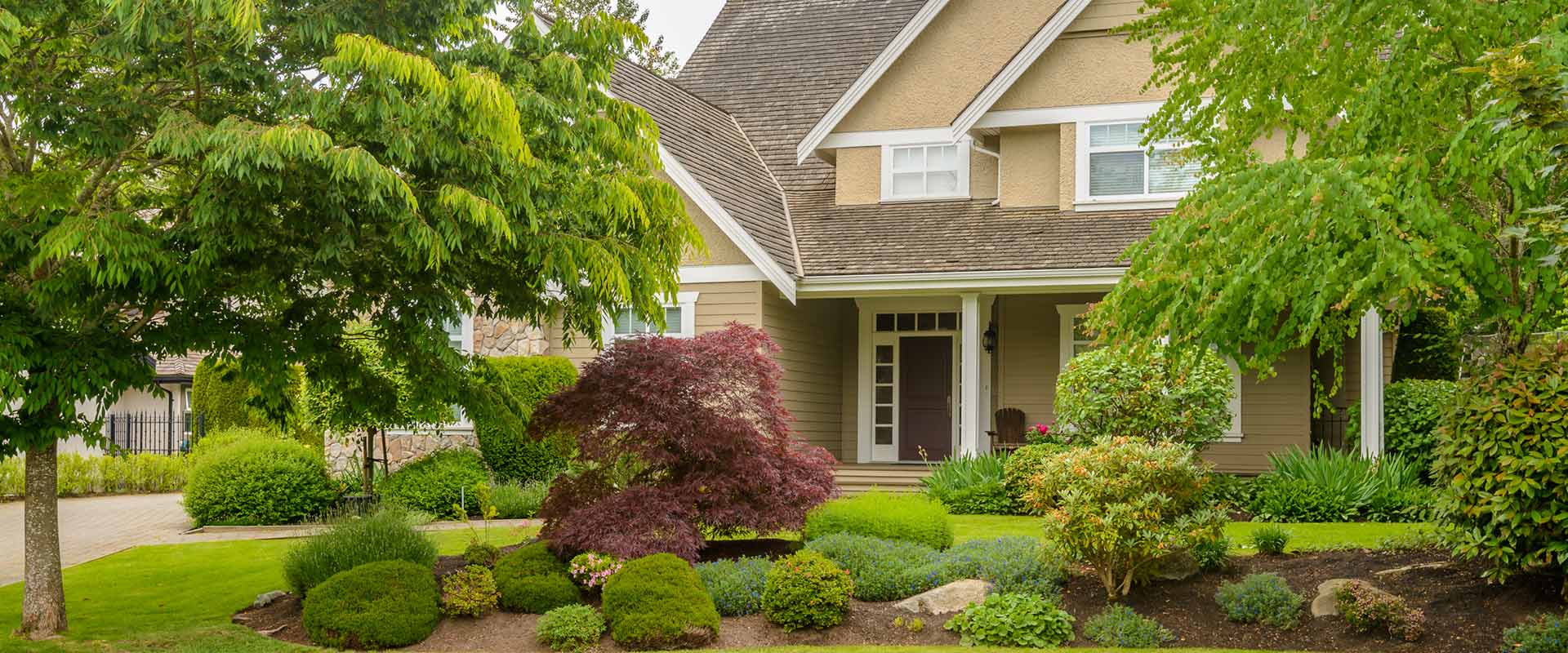Buying high quality trees for your Seattle home is easier if you know what to look for when shopping.
Eastside Tree Works offers these tips to help you chose a healthy tree by identifying potential issues with structure, roots, and injuries.
Avoid buying low-quality trees.
Buying trees with some or all of the below problems decrease the chance that it’ll be healthy and structurally sound.
- Weak form with multiple stems originating from the same point so that branches grow into each other.
- Trunk with wounds from handling or incorrect pruning.
- Crowded, crushed or circling roots in an undersized root ball.
In comparison, a healthy tree has no visible wounds or damage to its trunk. Branches are attached firmly to the trunk with plenty of space between them.
Remember FIR when buying.
Low quality trees usually develop problems as they grow. Because of this, they would likely need more care and maintenance and may not have a long or productive life.
When shopping for a tree, inspect it for problems using FIR, which stands for form, injuries, and roots.
Form is crucial for healthy life.
Young trees often have few branches as branching increases as trees age. Therefore, nurseries may prune saplings to encourage crown growth. While this gives the tree a fuller appearance, it may cause issues that will need to be addressed later with corrective pruning.
Good strong form starts with branches evenly spaced along the trunk with a sturdy attachment. It’s best to avoid those with very upright branches that have narrow angles of attachments. Why? As the tree grows, the branches may grow into the trunk.
Branches that press against the trunk or each other could signal future problems as the areas of contact may become compressed, crack, or even die back. Whenever several branches are growing at the same position (on the trunk), there is an increased chance of weak attachments, compression, and cracking.
When should pruning start?
Many architectural issues (in a tree) can be remedied with corrective pruning. It’s good practice to wait one year after planting before you prune the tree for the first time. This gives it time to recover from the stress of being transplanted.
It is ok to remove a branch if it’s broken or torn when you plant it. Other than that, wait a year before doing any corrective pruning to remove branches that may have dies after planting. We also recommend pruning be spaced over several years.
Inspect for injuries.
Checking the trunk is paramount when buying a tree. If the trunk is wrapped, remove the wrap so you can get a good look at the trunk. Looks for the following:
- Wounds
- Incorrect pruning cuts
- Insect injuries
Note: it’s ok to wrap the trunk during transport but always remove it after planting.
Incorrect pruning cuts are a big problem if it leaves a stub that prevents the trees from recovering from the cut. Cuts that remove or injure the swollen collar at the base of branches can lead to canker formation, decay and/or cracking.
What is correct pruning?
Correct pruning removes the branch just outside of the collar so that a ring of sound tissues grows around the cut. Cuts should not be made flush to the trunk because closing tissue may form only to the sides of the flush cuts.
When this happens, the tissue above/below flush cut branches often die. When hot temps in summer or cold temps in winter arrives, cracks or dead streaks may develop at the dead spots.
Root issues
Nursery trees are categorized according to how they are harvested and sold. Each type has a unique root system, such as the following.
- Bare root-no soil surrounding the roots (usually only small trees are packaged this way).
- Balled & burlapped-roots of field-grown trees surrounded with soil are held together with burlap and wire/rope.
- Container-roots and soil in a container.
You should inspect the roots before buying. Bare root stock makes this easy as you can clearly see the roots. They should not be crushed, torn, dehydrated, or discolored and the ends should be cleanly cut. If any roots are damaged, you may cut them clean before planting.
Balled & burlapped stock tips.
Even though it’s wrapped, you should be able to see the trunk flare (where the trunk widens to connect with the roots) at the top of the root ball. The top of the root ball should be flat. If it’s not, it may be a sign of woody root loss.
Also, the diameter should be at least 10-12 times the diameter of the trunk when measured 6” above the trunk flare. Do not buy trees with damaged or compressed root balls.
Container stock
You don’t want a tree where the roots are twisted or circle in the container. Circling roots may girdle and kill other roots or worse case scenario, kill the tree if wrapped around the trunk.
Small circling roots aren’t a problem as they can be cut around before planting. Larger roots can be straightened (if still flexible) during planting. If the trunk flare isn’t visible, carefully brush away the soil (don’t want to damage the bark) to expose if before planting.
Buying high quality trees will be easier when you follow these tips. Eastside Tree Works will be here when it’s time for those trees to be professionally pruned.
Contact Eastside to schedule your free no-obligation estimate for pruning or any of our tree services.

